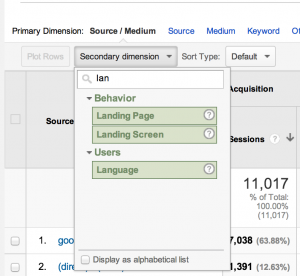10 Important Marketing Acronyms and What They Mean
No one likes to waste time with full words any more, right? OMG. LOL. A review of discussion among marketers highlights that acronyms are as common in this industry as in any other form of communication. Without wanting to risk TMI, herewith is a primer on 10 of the most important marketing acronyms and what they mean.

Content
- CMS — Content management system. An application that consolidates the creation, editing, and management of a website. WordPress or HubSpot are examples, although HubSpot calls its software a Content Optimization System.
- CTA — Call-to-action. Marketers aim to inform, educate and delight target audiences, but typically there is a desired action in mind. The call-to-action can be a text link, button, image, or web link that drives the audience to download, sign-up, call, register, attend, or some other action.
- SEO — Search engine optimization. Paying attention to SEO techniques can help a website be seen more often by Internet searchers. There are many attributes on a webpage that impact how search engines such as Google or Bing see the content on the site.
Lead Generation
- CRM — Customer relationship management software. A CRM lets companies manage and analyze customer interactions throughout the lifecycle to enhance relationships, convert leads, nurture sales, and assist in customer retention.
- KPI — Key performance indicator. KPIs are used across industries to evaluate success. Marketers have a range of KPIs to track to measure progress in campaign goals — such as lead generation, brand awareness, or converting sales.
- CTR — Clickthrough rate. Related to the CTA, the CTR gauges the percentage of the audience who take that next action. In the case of a landing page, for instance, the CTR would be the total number of people visiting the page divided by the number of people who actually advance.
- CRO — Conversion rate optimization. Taking an objective look at websites, landing pages, social media, CTAs, the marketer looks to improve the number of prospects converted to customers.
Regarding Design & Web Development
- GA — Google analytics. This Google statistical service helps the marketer to better understand the audience, digital activity, and track and report metrics.

- GDD — Growth driven design. An agile development or redesign of a website in intentional increments making continuous, data-driven adaptations. Learn more about what is growth driven design.
- BR — Bounce rate. This can be related to the website or email. With websites, it’s reflective of people landing on the page and leaving without clicking on anything. With email, BR reflects the number of undeliverable emails sent to recipients.
Now that you have the lingo down, move on to best practices.


